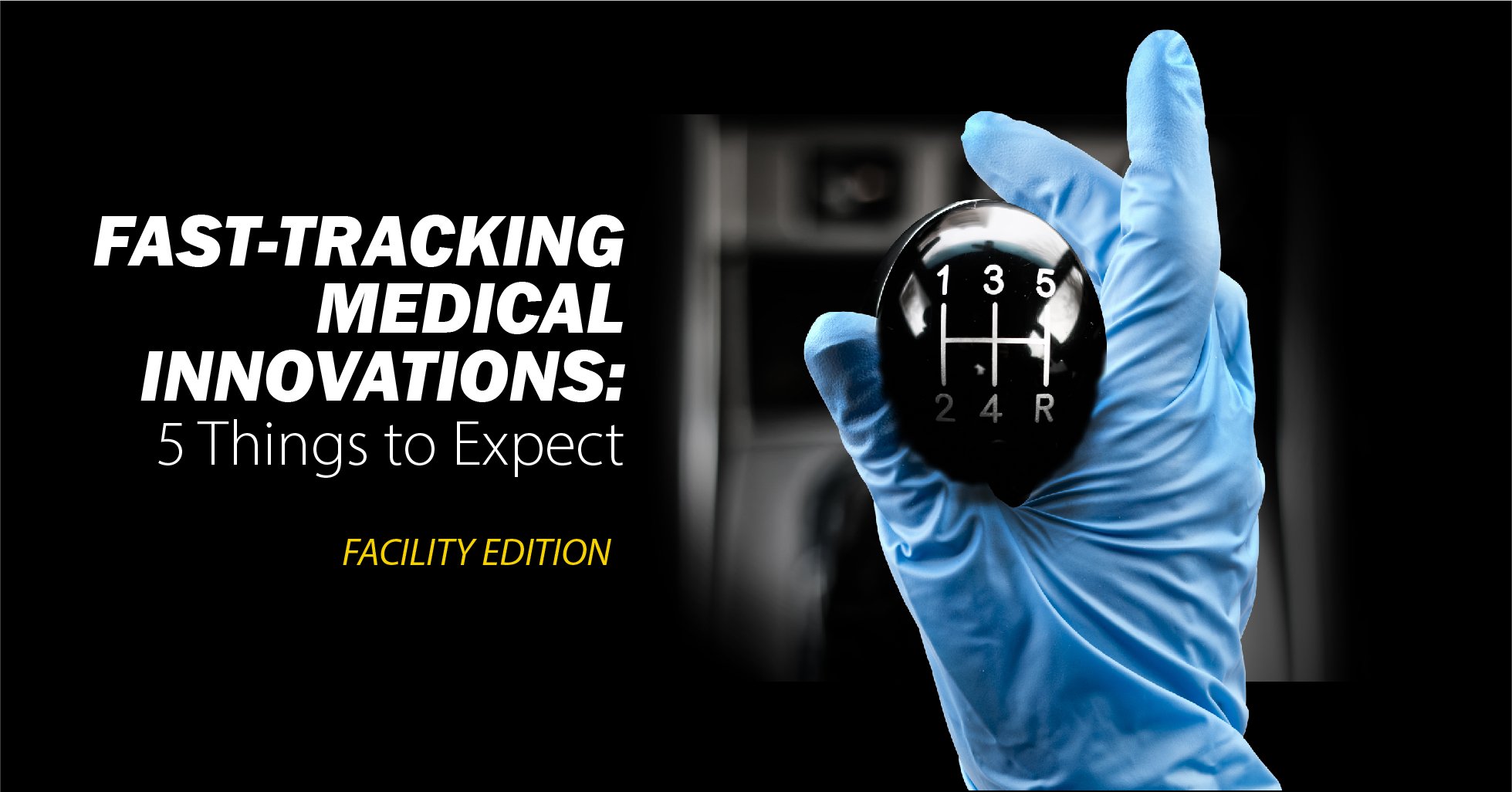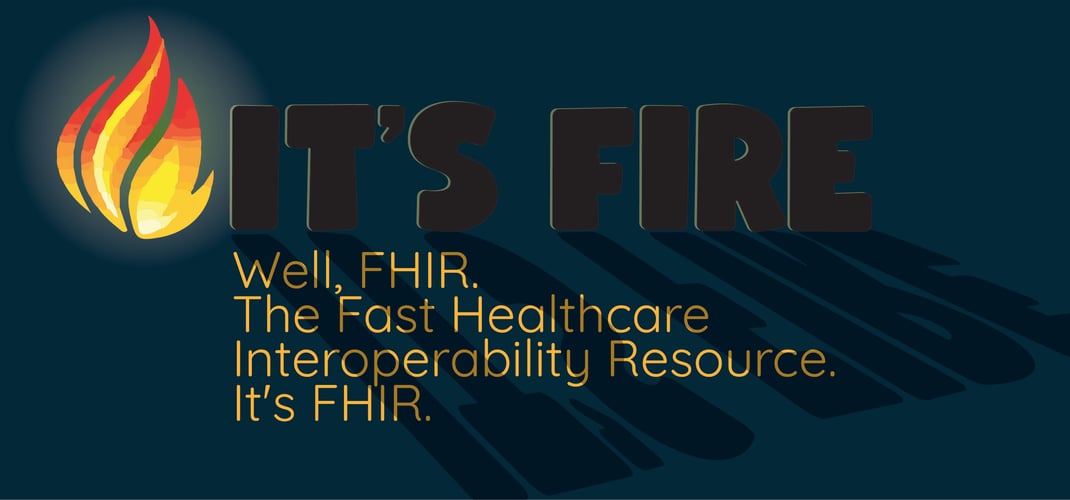Fast-Tracking Medical Innovations: 5 Things Your Facility Can Expect

 You go to a professional conference and learn about an exciting new medical innovation. You think it might work at your facility, so you go ahead and authorize its purchase and are ready to go. Then you wake up from your daydream and remember all the steps required to get that exciting new innovation into your facility - if that is even possible. With a sigh, you move on to your next session, thinking, how can we fast-track those medical innovations that could really make a difference in patient outcomes? What would that take? In today's post, we'll look at some of the things your facility can expect if they want to fast-track a medical innovation, and some ideas to make that process successful.
You go to a professional conference and learn about an exciting new medical innovation. You think it might work at your facility, so you go ahead and authorize its purchase and are ready to go. Then you wake up from your daydream and remember all the steps required to get that exciting new innovation into your facility - if that is even possible. With a sigh, you move on to your next session, thinking, how can we fast-track those medical innovations that could really make a difference in patient outcomes? What would that take? In today's post, we'll look at some of the things your facility can expect if they want to fast-track a medical innovation, and some ideas to make that process successful.
1. If you want to fast-track an innovation, you've probably got a crisis on your hands. When there is time, medical decisions are made carefully, thoughtfully, and let's face it, slowly. When there is a crisis, the need for quick decisions can make the difference between life or death - for a patient and even for a hospital. For example, as surveillance of hospital-associated infections spurred a need for immediate and effective infection prevention protocols and products. But even under duress, innovations have to be vetted and researched. We can find ways to fast-track adoption of new technologies by a protocol ready in advance, with a team of professionals to share due diligence research and decision-making responsibilities.
2. Fast adoptions of technology will get the attention of your facility staff and stakeholders. It is essential to fast-track communication and education along with an innovation. Staff will be concerned with how the new technology will affect their job and job performance. They will be concerned that a quick purchase of something new was made without consideration of requests they might have made and were denied, or that the new technology is just a flashy gimmick. If you are the proponent of the technology you want to fast-track, you may have to educate the decision-makers about the positive impact it will have on not just the patients, but the facility as a whole. A lot of groundwork has to take place for progress to take place quickly.
3. You may need to forge new and unexpected partnerships to launch an innovation quickly. When the COVID pandemic first swept across the country, partnerships between healthcare, pharmacies, city planners, schools, and community centers made a huge difference in the ability to test and vaccinate our population. Many of us got our vaccines in empty malls and picked up free home testing kits at grocery stores. When a facility wants to fast-track a solution or a technology, partnerships can also make a difference. Working across departments brings more people to the table, able to share responsibilities and demonstrate positive outcomes for even more patients. Biocidal materials in patient rooms, for example, helps all departments reduce infection risks. Costly equipment could be shared with a network of facilities, spreading the financial investment.
4. When it comes to vetting and researching, share the responsibility with others. These days, it can be difficult to know what influences affect which products are written about in professional publications. Those companies with deep pockets can afford to sponsor articles, place ads (some that even look like articles), and pay to be included in directories of "trusted products." This means that we are always on alert for misinformation or biased data. But this also means that we have a lot more responsibility to vet and perform due diligence than ever before. To speed up this process without cutting corners, share the responsibility of staying up-to-date on research with a team. Just like in a college study group, assign topics or journals and share summaries with each other. Like a book club, set a schedule for dates when your team shares what they read, even if it's just via email. A way to streamline your own research is to have a list of criteria to check for: Sample size, confounders, study design. In this way, you can ensure you are spending your limited time on the best quality research.
5. When you have science to back up your decision, the leap will not rely on faith alone. When considering a new technology, there will come the day when you have to decide whether you are going to go out on a limb and recommend the innovation to a team or supervisor. This may seem like taking a huge leap of faith, with your career and reputation in the balance, especially if the decision was made during a crisis or under a time constraint. To take the "faith" out of the equation, you need to have your decision based on quality research and data. Consider the body of research, check the boxes for published bench science, clinical trials, regulatory approval, and adoption at other facilities. When you have this data on your side, your leap of faith just might become a leap of progress.
Anticipating obstacles is the first step in adopting a new technology, especially when you want to fast-track the process. Knowing your facility culture, reaching out to representatives from many stakeholders, and arming yourself with quality science can do wonders in making the adoption process more efficient. What are some ways that you have participated in the adoption of a new technology or innovation? Share your stories in the comments below!
![EOScu Logo - Dark - Outlined [07182023]-01](https://blog.eoscu.com/hubfs/Eoscu_June2024/Images/EOScu%20Logo%20-%20Dark%20-%20Outlined%20%5B07182023%5D-01.svg)




